Image of the Golden Age
Allow yourself to be transported to the court of the last Jagiellons.
Discover the hidden sides of a great monarchy.
This autumn, nearly 400 unique works of art from thirteen countries around the world will be on view at Wawel Royal Castle in Image of the Golden Age, an exhibition recalling the Renaissance flowering of art and culture in Poland and Lithuania under the last kings of the Jagiellonian dynasty.
The Krakow exhibition will showcase notable objects from public, ecclesiastical, and private collections. It will include not only widely known and exhibited works of art, but also a number of newly discovered objects, as well as may that have never been exhibited in Poland.
For three months, the former royal residence on Wawel Hill will be filled with several hundred works gathered from all over the world, including the Bodleian Library in Oxford, the British Library in London, The Metropolitan Museum in New York, the Louvre in Paris, the National Museum in Prague and the Museum of Fine Arts in Budapest.
From September 15, 2023, let yourself be enchanted by the art of the Jagiellonian era. See Wawel Royal Castle’s most anticipated international exhibition, which we are sure will repeat the huge successes of the exhibitions All the King’s Tapestries and the opening of the New Crown Treasury.
Discover the hidden sides of a great monarchy.
This autumn, nearly 400 unique works of art from thirteen countries around the world will be on view at Wawel Royal Castle in Image of the Golden Age, an exhibition recalling the Renaissance flowering of art and culture in Poland and Lithuania under the last kings of the Jagiellonian dynasty.
The Krakow exhibition will showcase notable objects from public, ecclesiastical, and private collections. It will include not only widely known and exhibited works of art, but also a number of newly discovered objects, as well as may that have never been exhibited in Poland.
For three months, the former royal residence on Wawel Hill will be filled with several hundred works gathered from all over the world, including the Bodleian Library in Oxford, the British Library in London, The Metropolitan Museum in New York, the Louvre in Paris, the National Museum in Prague and the Museum of Fine Arts in Budapest.
From September 15, 2023, let yourself be enchanted by the art of the Jagiellonian era. See Wawel Royal Castle’s most anticipated international exhibition, which we are sure will repeat the huge successes of the exhibitions All the King’s Tapestries and the opening of the New Crown Treasury.
- Please note: the ticket to the Image of the Golden Age exhibition entitles you to visit the State Rooms;
if you buy online first choose date, than "museum visit" and find "The Jagiellons Golden Castle - Image of the Golden Age and the State Rooms"
Exhibition teaser
For the purposes of this exhibition, several dozen works of art have undergone conservation, from graphic illustration and illuminated manuscripts through works of the goldsmith’s art to massive altars.
On the occasion of the exhibition, the Royal Wawel Castle has also received a generous gift from Jerzy Wojciechowski; thirty works by Giovanni Jacopo Caraglio. This Italian in the employ of Sigismund II August was an excellent illustrator and expert carver of hardstone, an art form involving the creation of miniature royal portraits in semi-precious stones. Among the masterworks of this artist, visitors will be able to admire a cameo with a portrait of Queen Bona Sforza (The Metropolitan Museum of Art). The majestic image of Bona, bejewelled and richly dressed is a given a heroic touch by the addition of a brooch in the form of the head of Medusa, an attribute of the goddess Minerva and a symbol of “victory over evil”. The framing of the portrait, different from the widow’s portraits made of the queen after 1548, indicate her intentions to return to power.
The conception of the exhibition Image of the Golden Age is intended to show the revolutionary transformations taking place in the culture of Poland and Lithuania during the reigns of the last Jagiellons.
“Image of the Golden Age” is a monumental exhibition, a kind of experience which is a rare event among contemporary exhibitions. It is an exhibition which will move visitors, surprise them, and most certainly give them a first-hand look into the meaning of the reigns of the last Jagiellons by showing a whole range of cultural, philosophical, scientific, spiritual, and even physiognomic contexts. This is not just an ordinary art exhibit, it is an exhibition which delves deeply into the visual culture of the era of the Jagiellonian monarchs. The exhibition is impressively arranged on all the floors of the Renaissance castle, in 20 rooms to be precise, and transports us in a natural way to the reigns of the last Jagiellons, for example by showing the bed chamber of Sigismund I as an intimate area for prayer, the place where the sources tell us that the ruler passed away on the Sunday of the Resurrection of Our Lord in 1548. The scenography of the Envoys’ Hall may come as a surprise, as visitors will for the first time be able to stand face-to-face with the famed Wawel heads. The residence was after all a witness to many events associated with the lives and work of Polish kings. The use of the castle rooms as exhibition spaces has therefore created a unique opportunity to present the collected exhibits in their historical context,” says professor Andrzej Betlej, director of the Wawel Royal Castle.
A significant part of the exhibition comprises artistically outstanding works intended for the furnishings of churches. Together they create a panorama of the stylistic transformations occurring in the Polish and Lithuanian lands between the late 15th century and first quarter of the 16th century. An excellent illustration of these processes is also provided by works by Hans Dürer, who was employed by Sigismund I (including the Portrait of a Young Man from the Spada Gallery in Rome, never before exhibited in Poland) and the previously mentioned Giovanni Jacopo Caraglio, displayed next to each other. A portrait of an elderly woman identified as the queen Anna Jagiellon, belonging to the collections of the Rijksmuseum in Amsterdam, will be exhibited for the first time in Poland. The exhibition will also be the Polish premiere of a portrait of Sigismund II August embossed on leather on a shield (Livrustkammaren in Stockholm). These are only a few of the many outstanding pieces that have been brought to Poland from around the world.
Masterpieces of miniature painting IN THE KING’S BED CHAMBER
On a floor of the Kurza Noga, the section of the castle curiously named the Hen’s Foot, in the bed chamber of Sigismund I is collected a group of luxuriously finished prayer books intended for private use with illustrations which were meant to facilitate intimate contact between the person praying and God. These true masterpieces of European miniatures decorated by Stanisław Samostrzelnik are small prayer books belonging to Sigismund I (London, the British Library) and his spouse Bona Sforza (Oxford, the Bodleian Library), as well as magnates: Wojciech Gasztołd (Munich, Universitäts Bibliothek der LMU München) and Krzysztof Szydłowiecki (Milan, Archivio Storico Civico e Biblioteca Trivulziana).
FACE TO FACE WITH HEADS
The exhibit in the Envoys’ Hall is of a cumulative review and culmination of the entire exhibition. Visitors are sure to be impressed by the thirty wooden carved human heads which have been taken down especially for this occasion from the coffers in the ceiling forming a circle in the centre of the Hall. Their exposition at eye level will allow visitors to literally stand “face-to-face” with the images of real persons from the past (?), historical and mythological heroes (?), personifications of ideas (?), and perhaps even personifications of planets (?).
Image of the Golden Age at Wawel Royal Castle
The honorary patronage of the Minister of Culture and National Heritage, Professor Piotr Glinski.
Curator: Krzysztof J. Czyżewski
Co-curators: Natalia Koziara-Ochęduszko, Rafał Ochęduszko
The honorary patronage of the Minister of Culture and National Heritage, Professor Piotr Glinski.
Curator: Krzysztof J. Czyżewski
Co-curators: Natalia Koziara-Ochęduszko, Rafał Ochęduszko
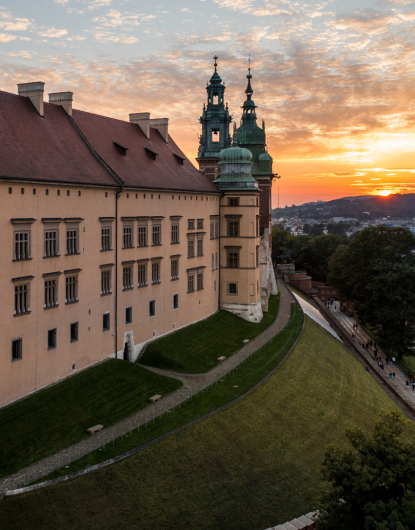

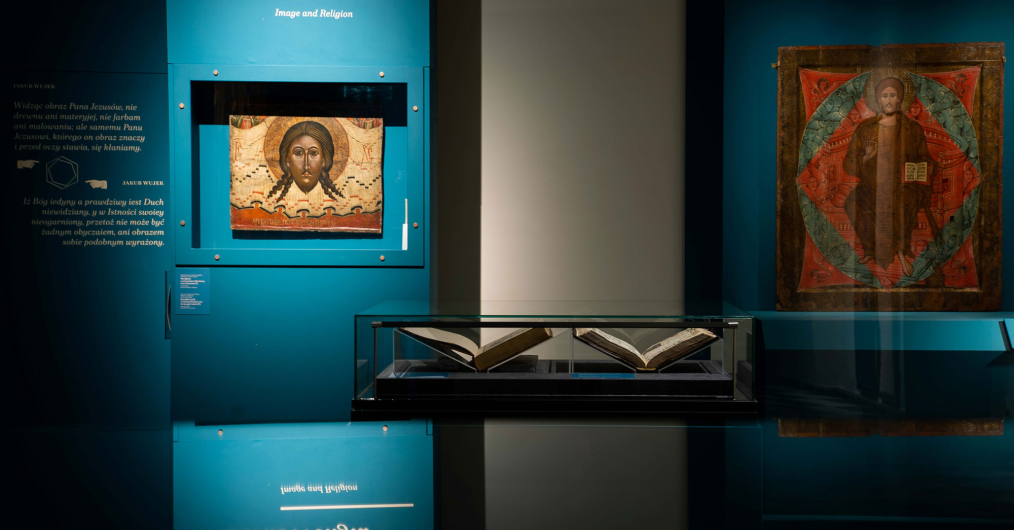
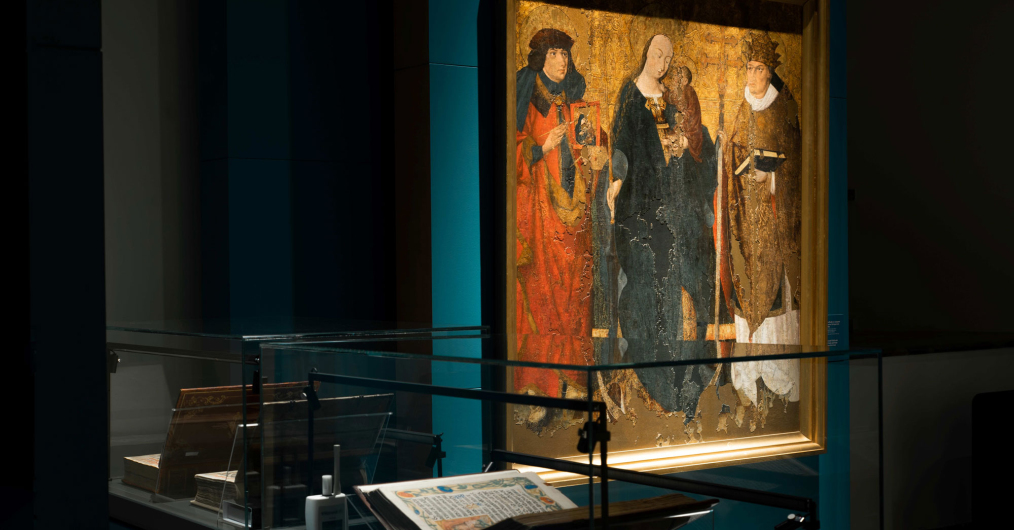
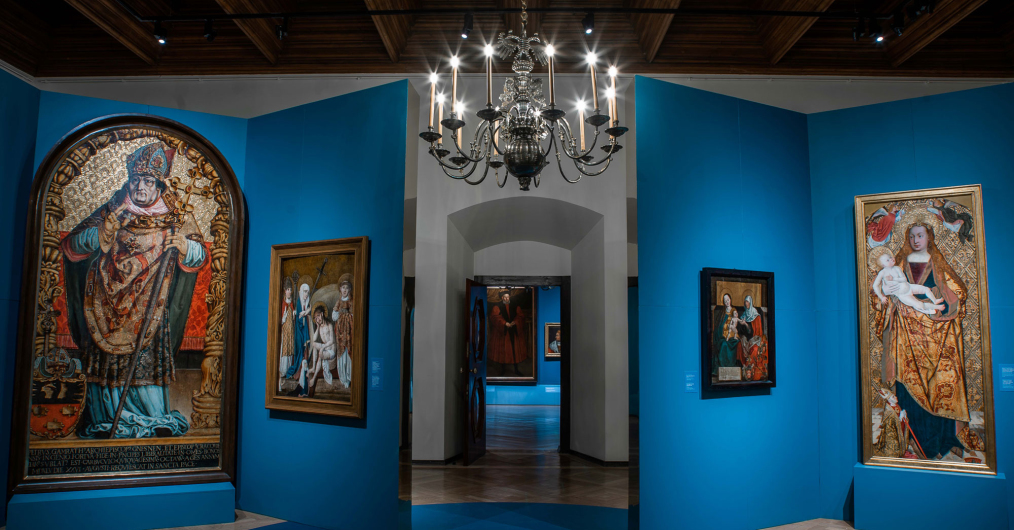
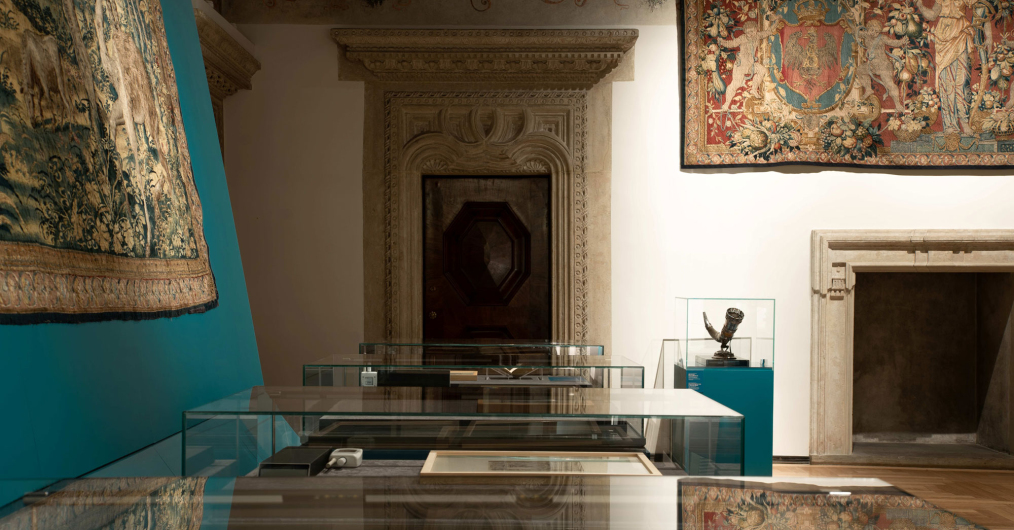
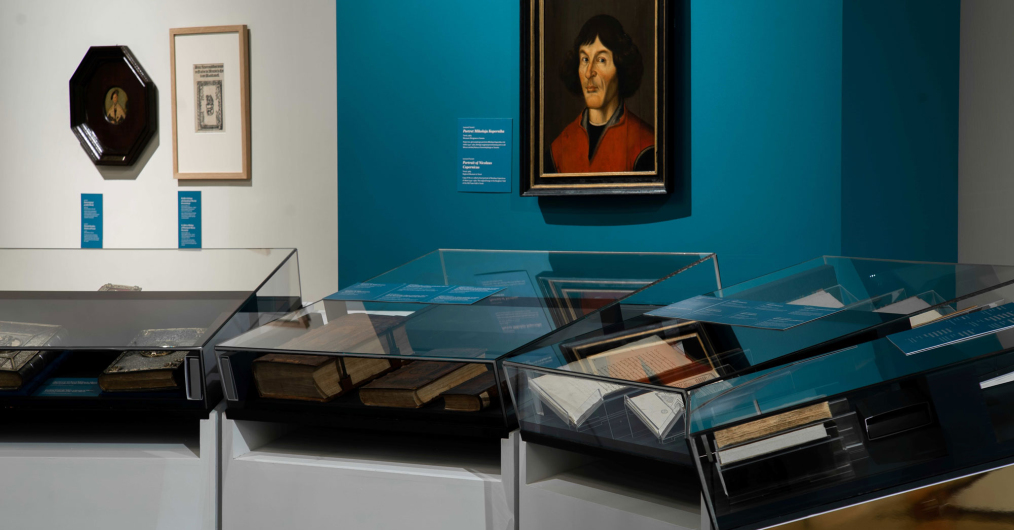
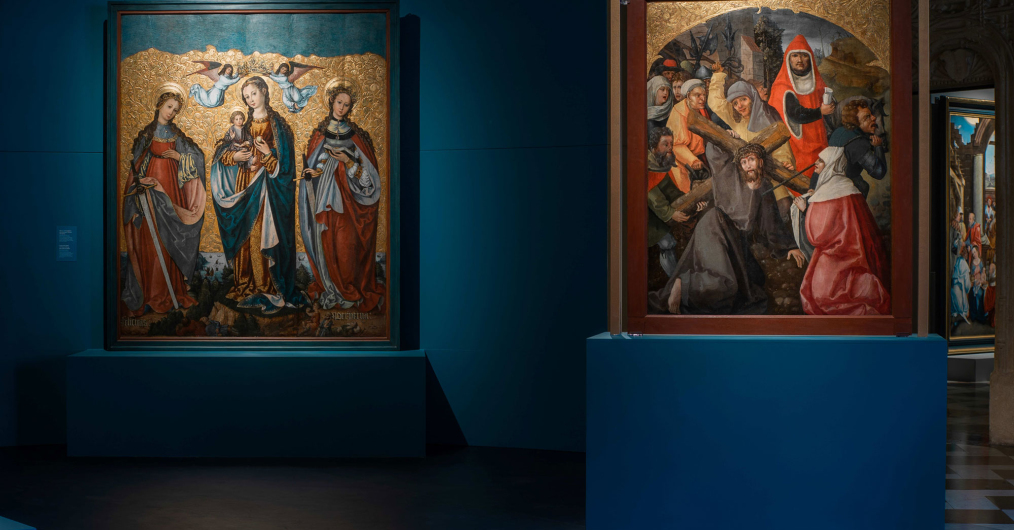
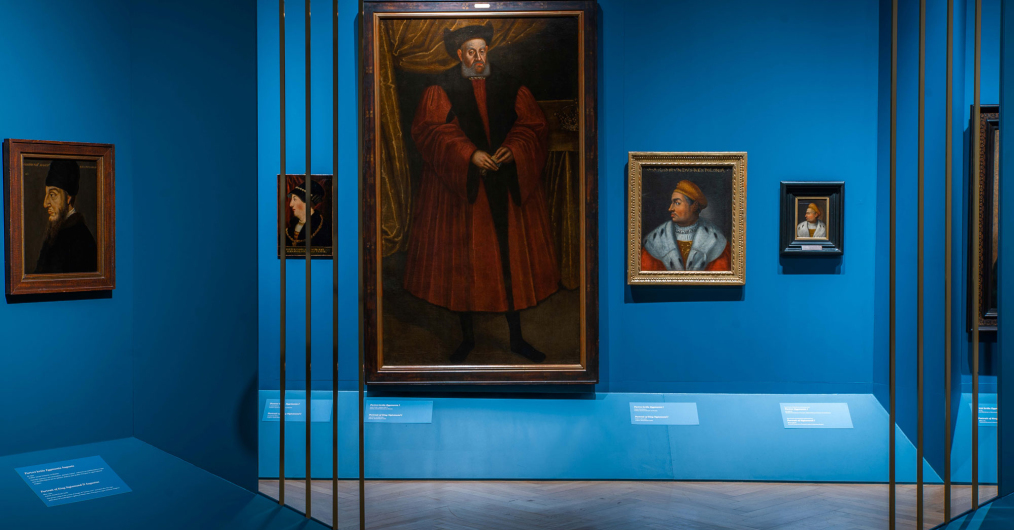
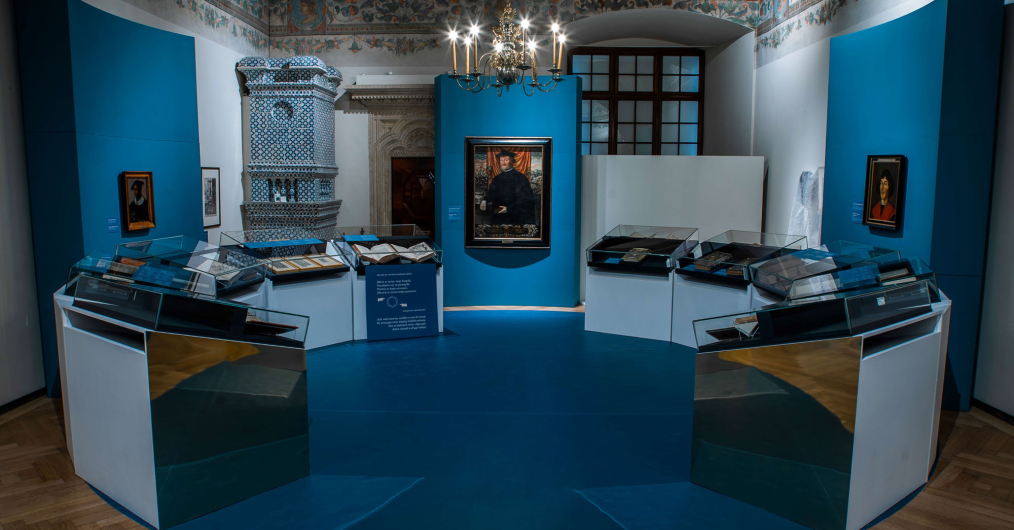
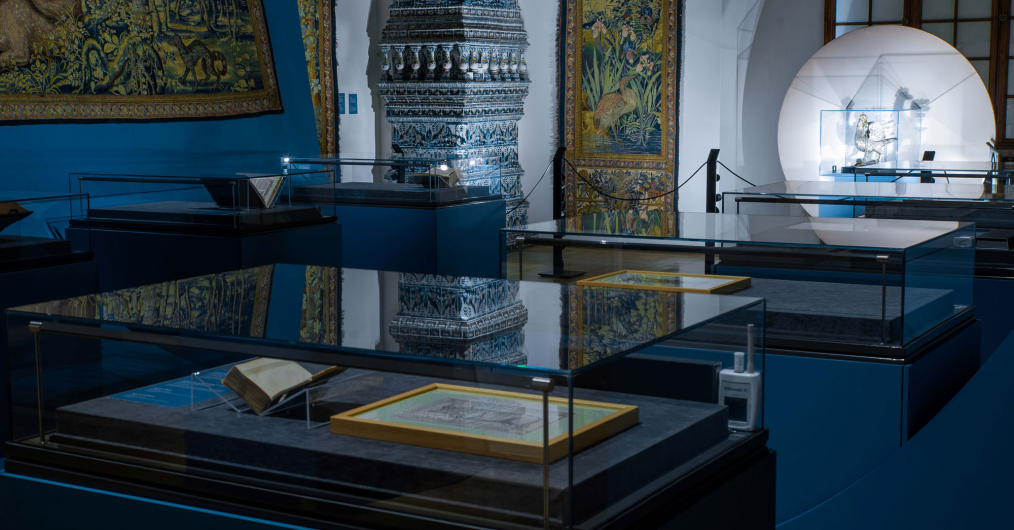
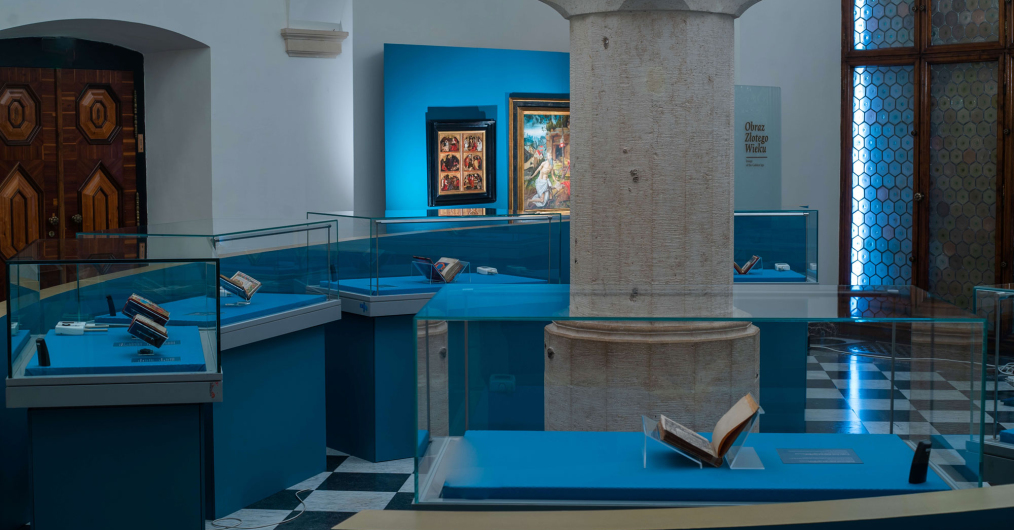
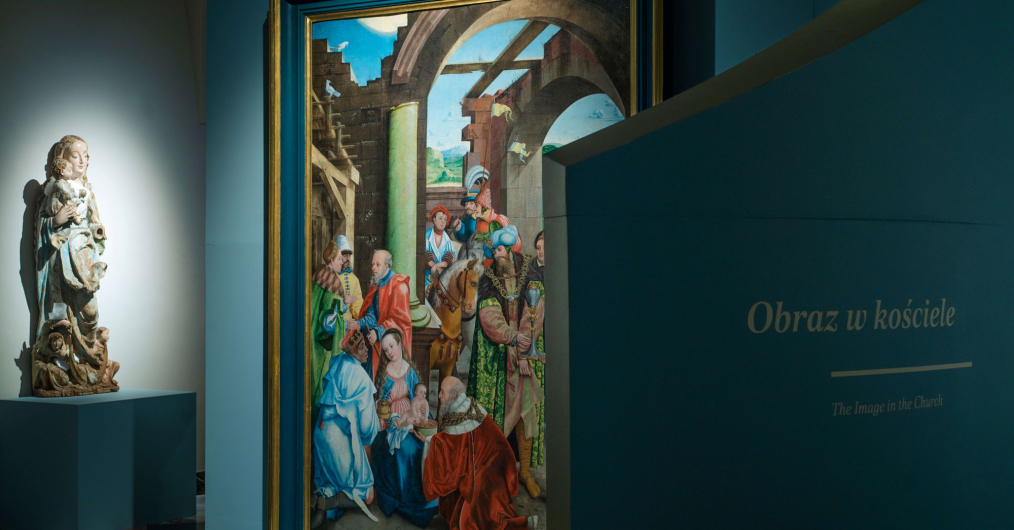
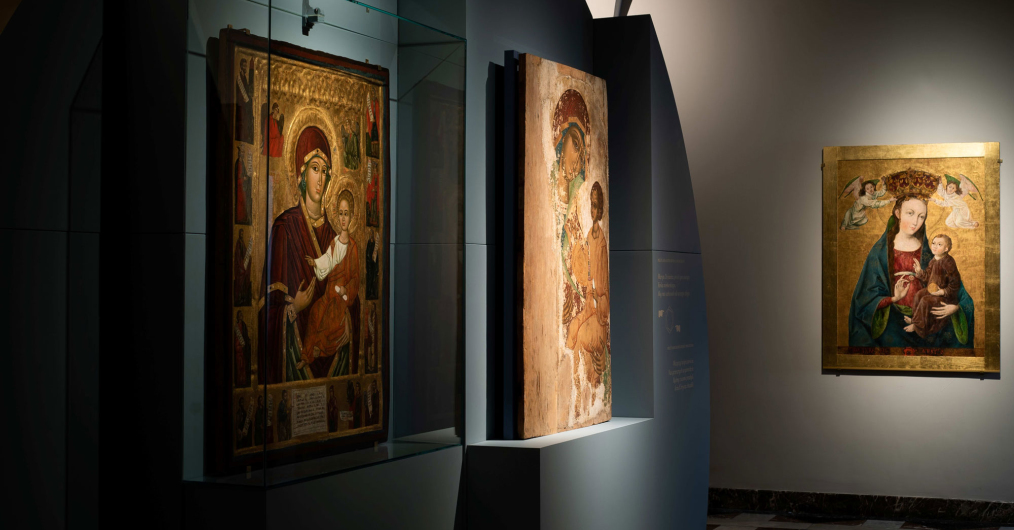
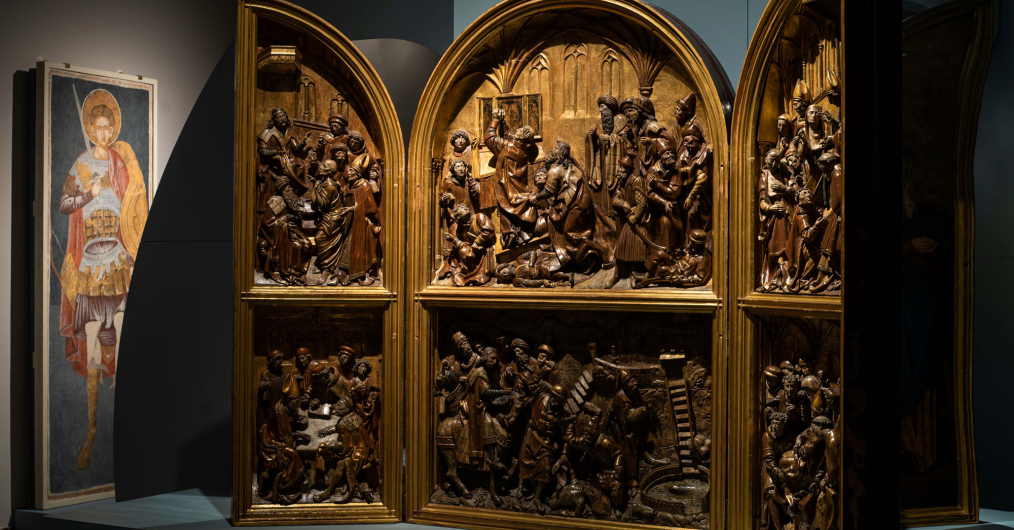
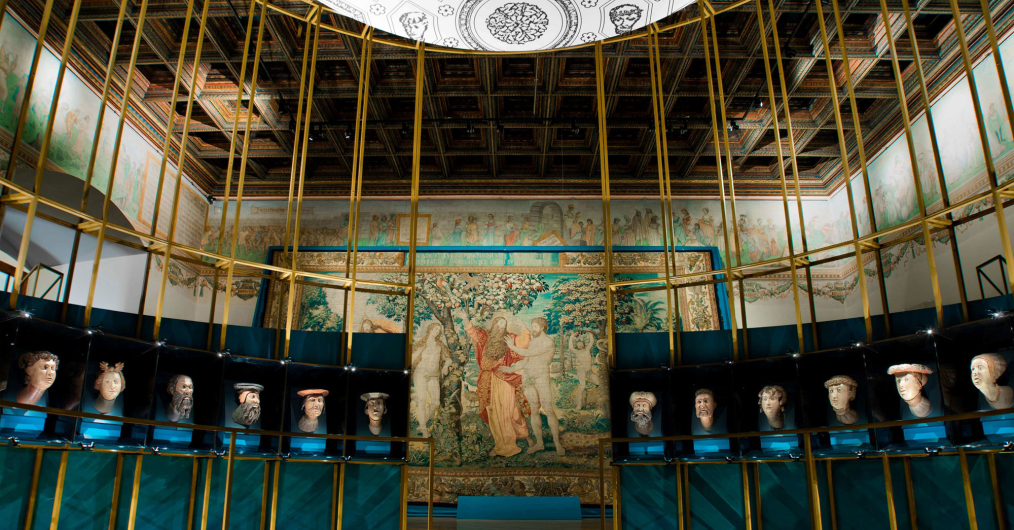
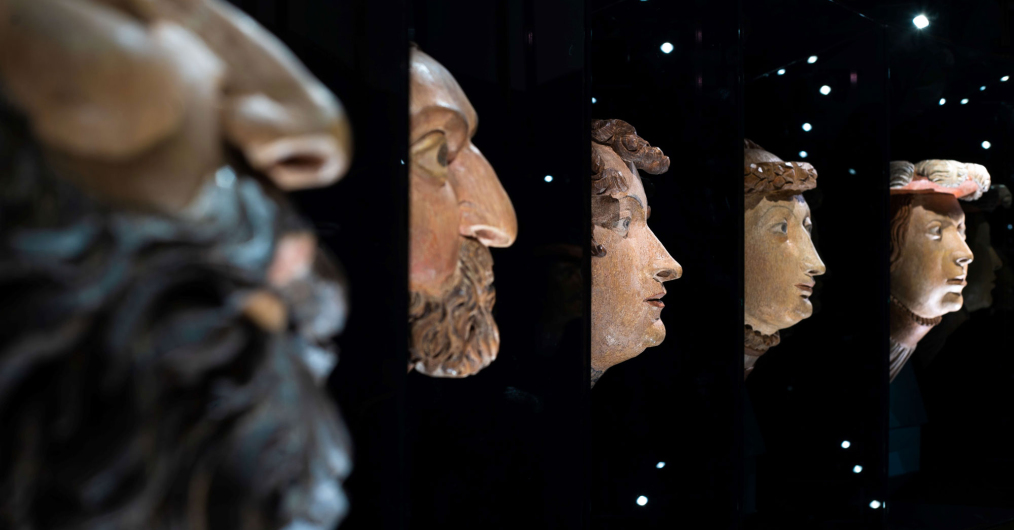
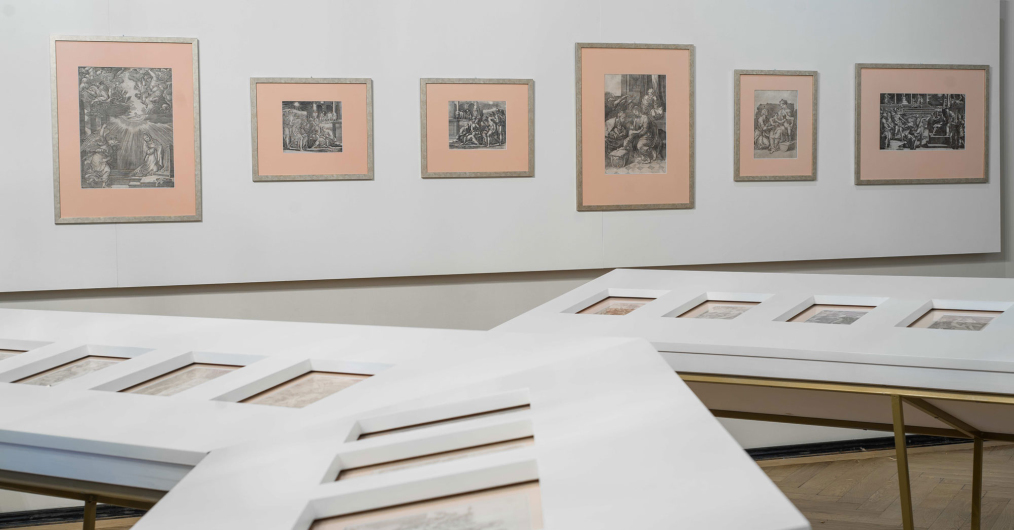
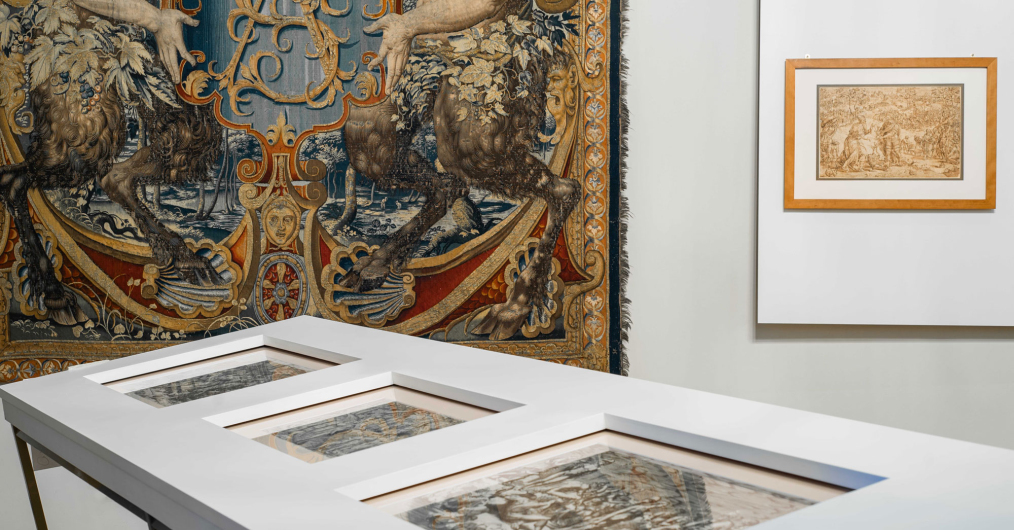
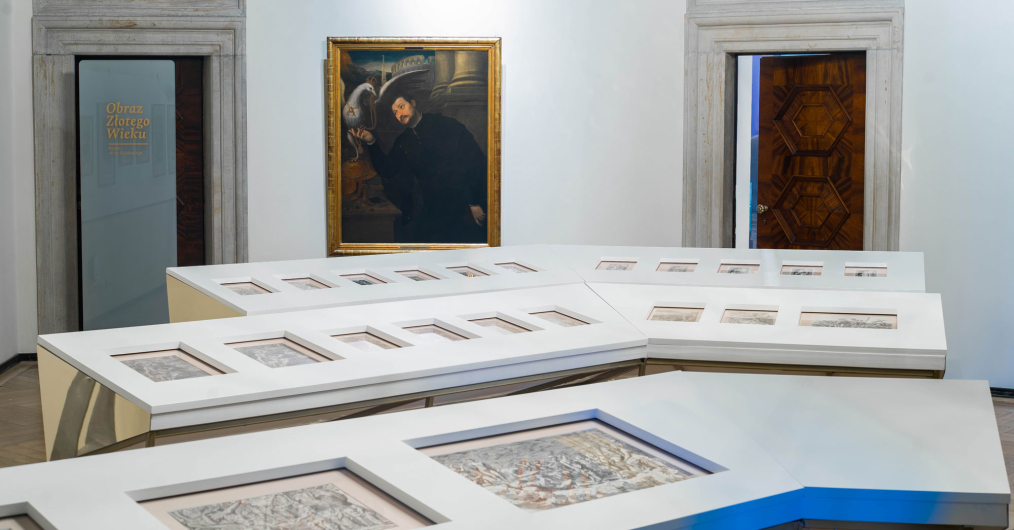
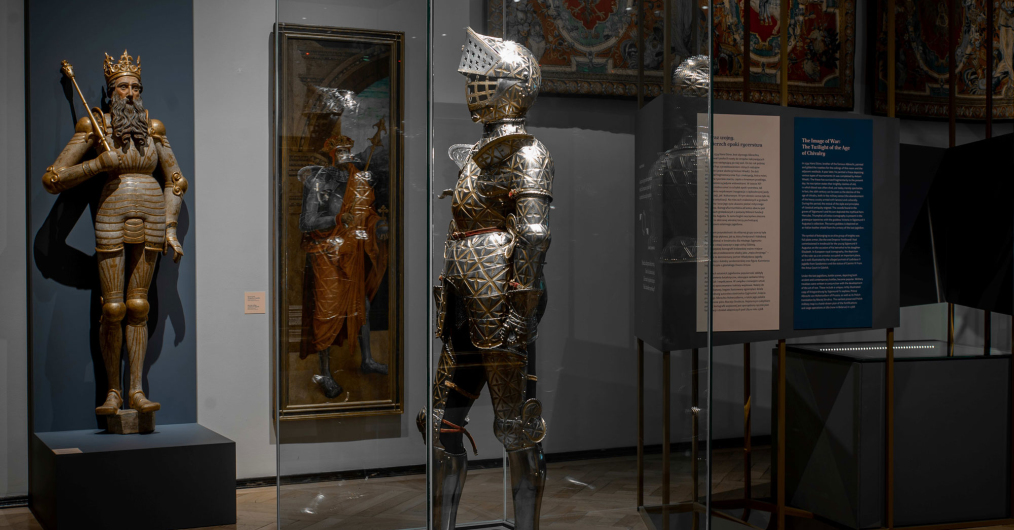
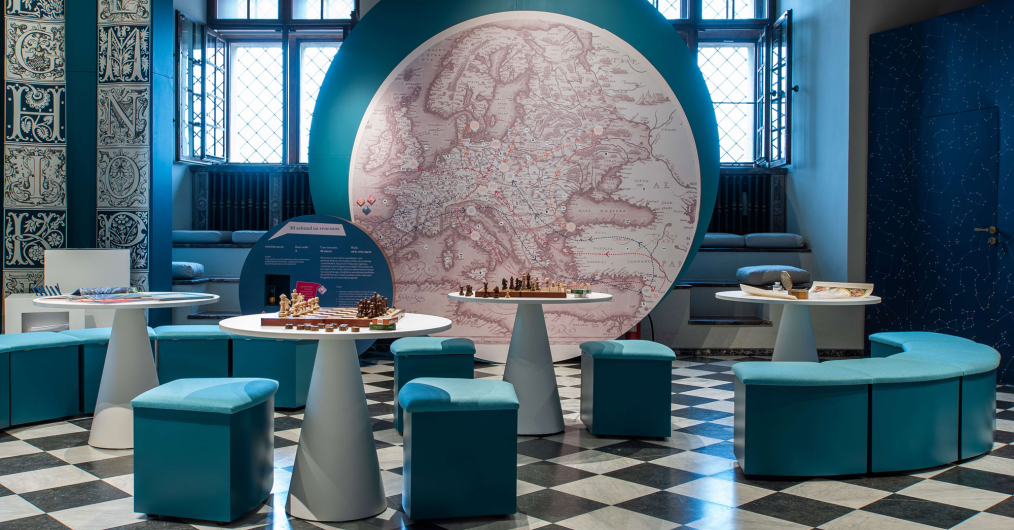
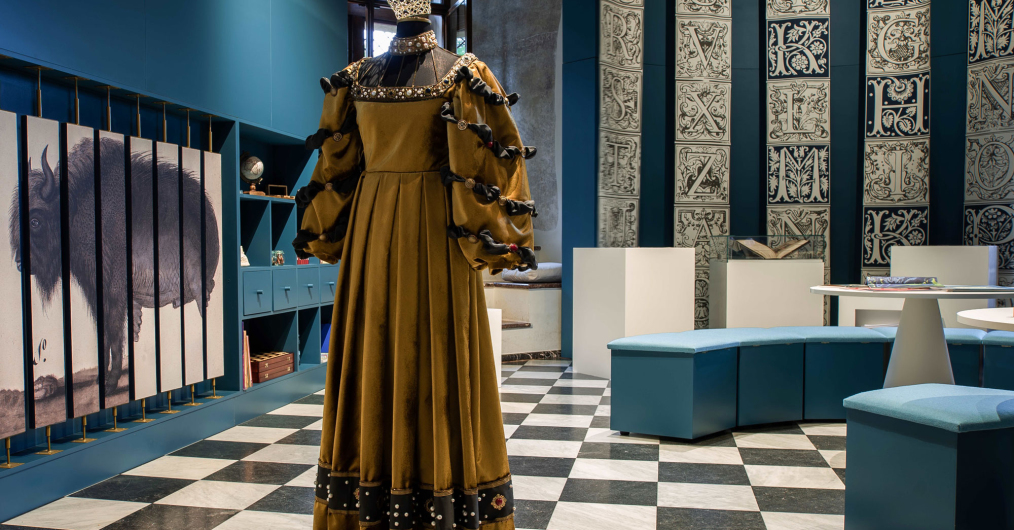
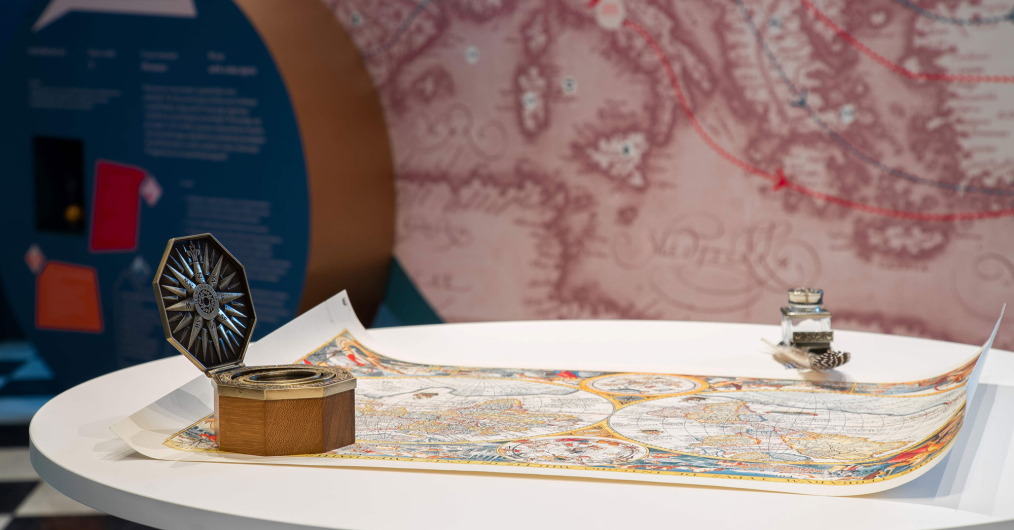
 Honorowy patronat Ministra Kultury i Dziedzictwa Narodowego
Honorowy patronat Ministra Kultury i Dziedzictwa Narodowego





















